The simplest beam bridge could be a log (see log bridge), a wood plank, or a stone slab (see clapper bridge) laid across a stream. Bridges designed for modern infrastructure will usually be constructed of steel or reinforced concrete, or a combination of both.
What would be a good material to build a bridge with?
Best Material for Bridges: Steel
Steel is a versatile building material, used for centuries in various capacities. Its strength and permanence are ideal for long-lasting structures, like bridges. The use of steel for bridges replaced earlier materials such as wood, concrete and stone.
Which strong beam is used to construct buildings and bridges?
A girder beam can resemble a square or rectangular shape connected by other beams and trusses. Professionals often use these beams because girder beams can bear more weight than most beams. Construction workers and engineers sometimes use girders to create bridges and flyovers.
What is the cheapest material to build a bridge?
What is the strongest type of beam bridge?
What is the definition of a bridge construction?
A bridge is a structure which is built over some physical obstacle such as a body of water, valley, or road, and its purpose is to provide crossing over that obstacle. It is built to be strong enough to safely support its own weight as well as the weight of anything that should pass over it. •
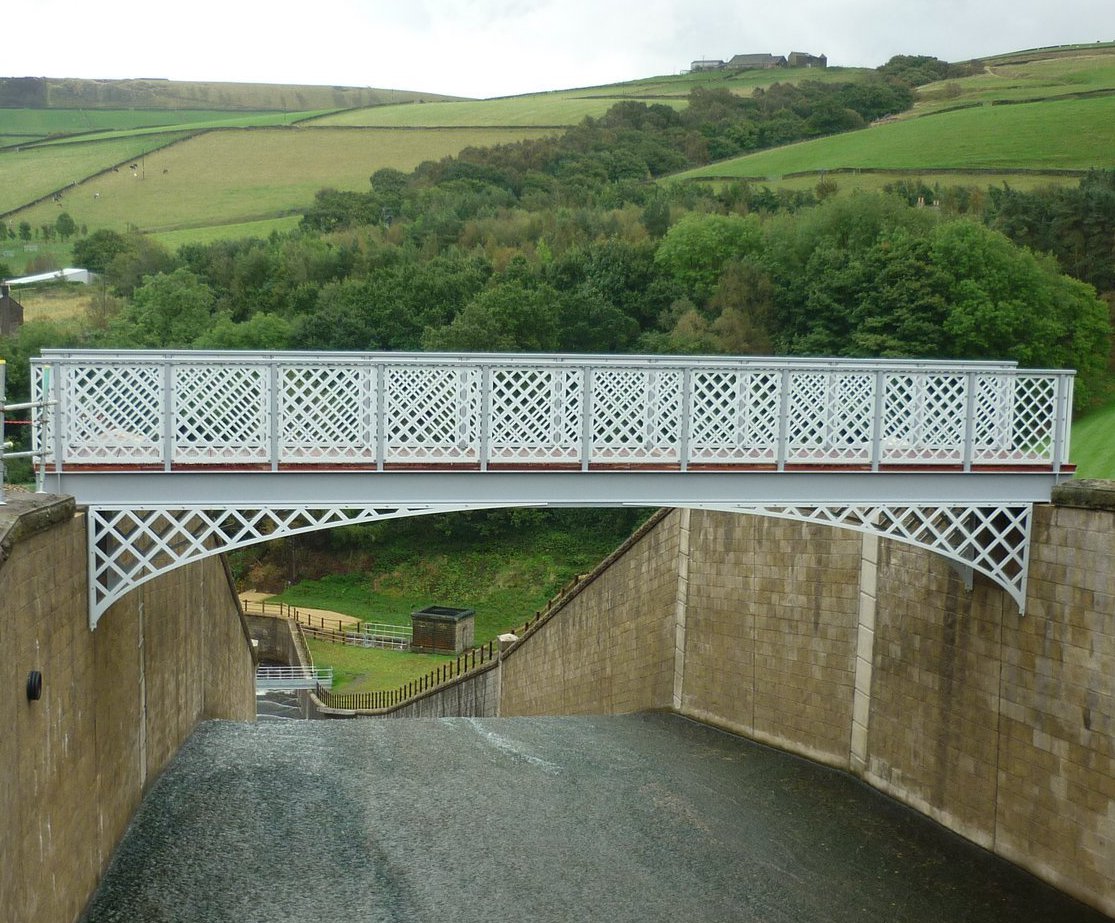
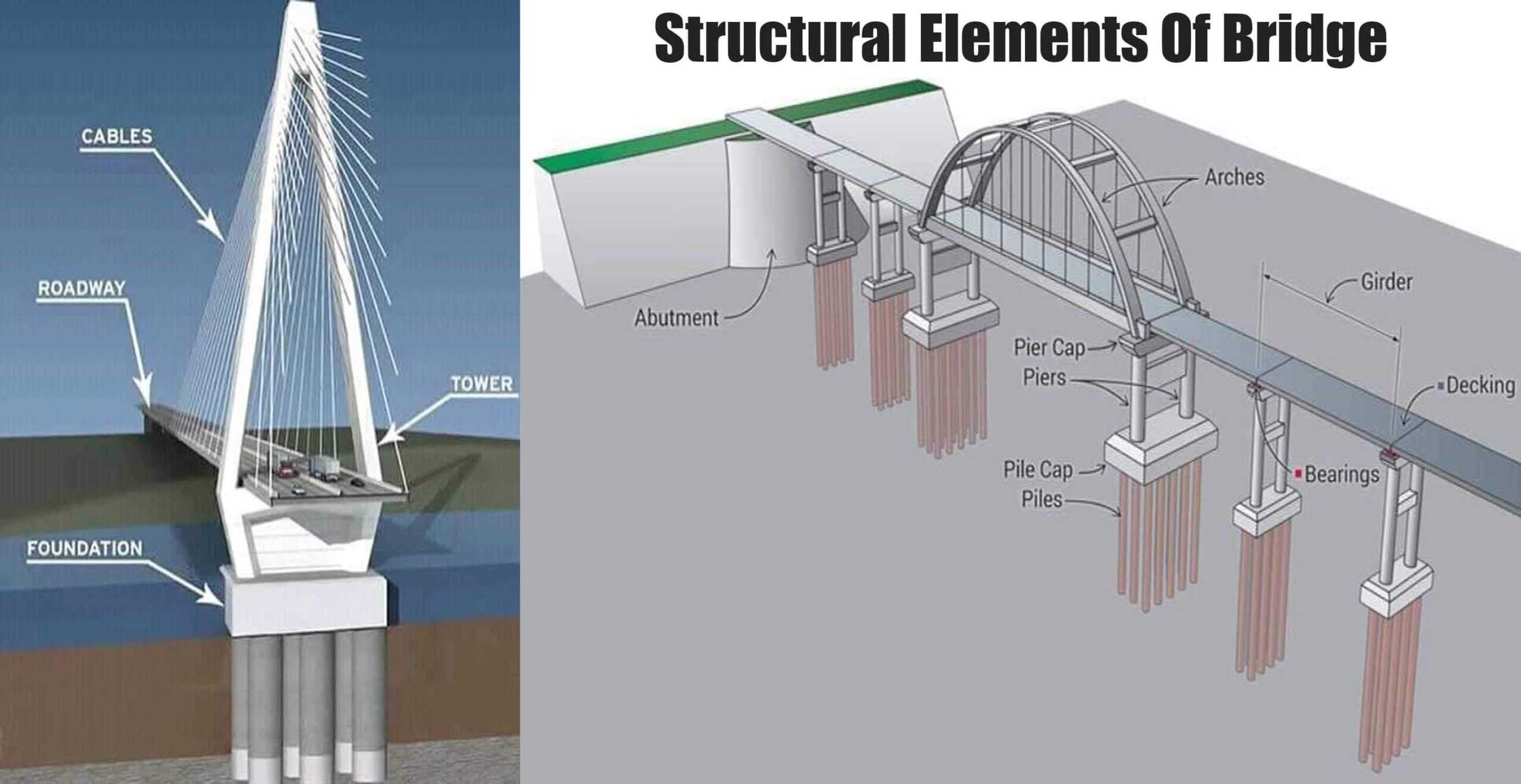
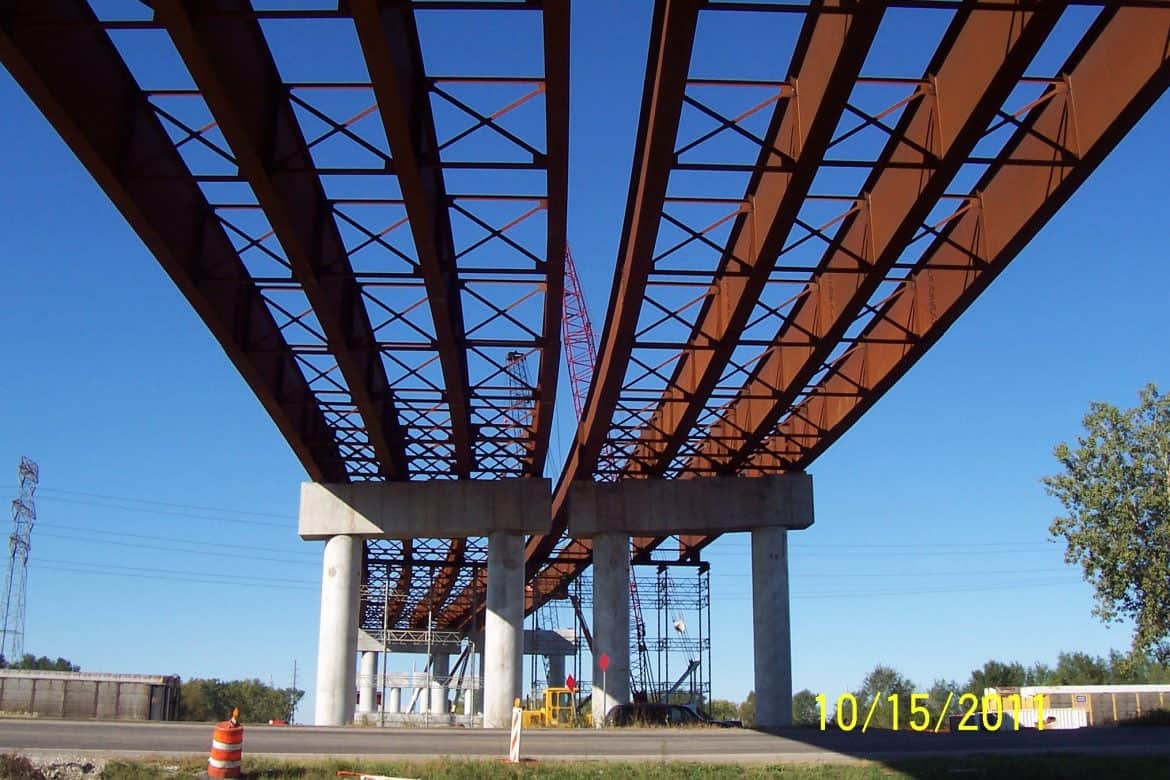
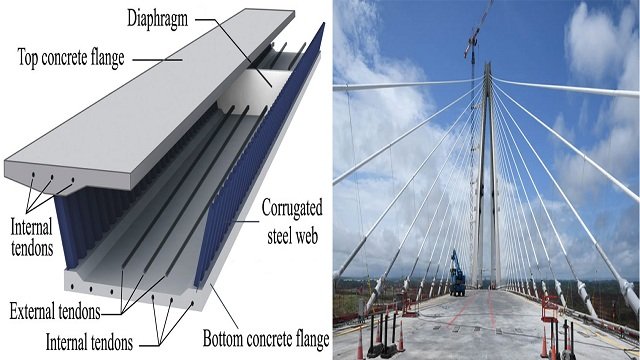
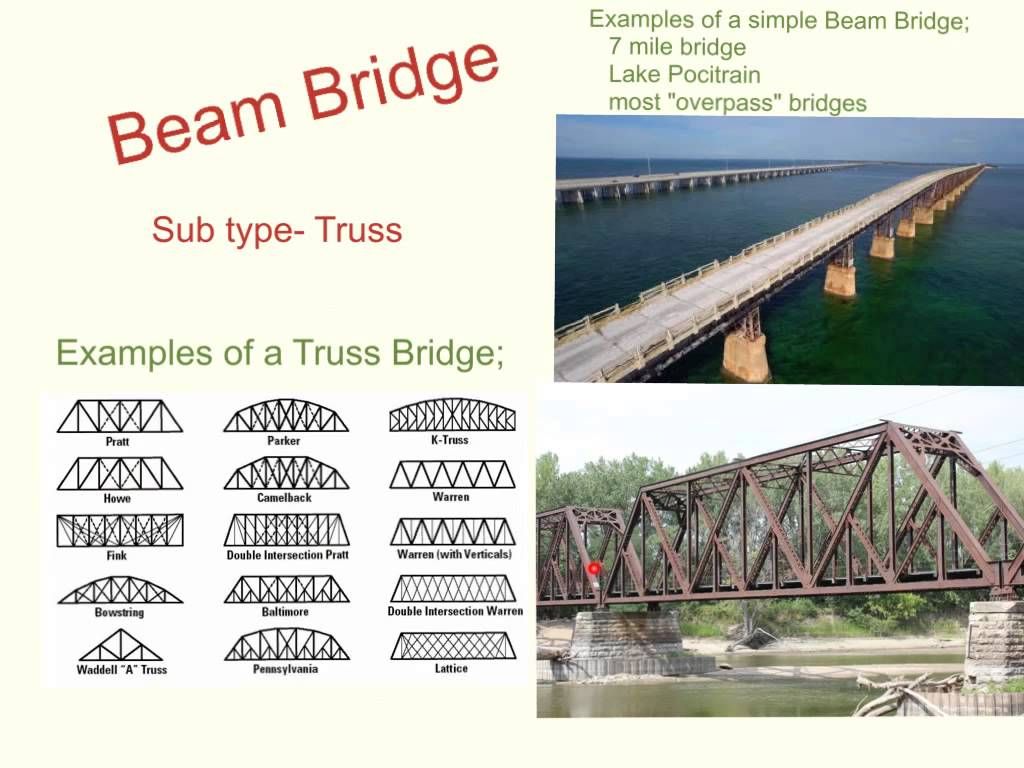
How a bridge is constructed?
Site preparation: Clear the area where the bridge will be constructed and level the ground. Foundation construction: Construct the foundations or piers that will support the bridge. Beam placement: Install the horizontal beams across the supports. Deck installation: Place the bridge deck on the beams.
Frequently Asked Questions
What is a bridge in simple terms?
What type of structure is bridge?
A bridge is a spanning structure that creates a passage over an obstacle such as a river, gorge, valley, road, railway and so on. Bridges are a common feature of the built environment and one of the key elements of civil engineering.
How are bridges classified?
There are six basic bridge forms: the beam, the truss, the arch, the suspension, the cantilever, and the cable-stay.
What material are suspension bridges made of?
Towers are most often built from either steel or reinforced concrete, and both of these materials have been used regularly for many of the world's most well-renowned suspension bridges. Going back to Golden Gate as an example, the famous towers were made out of pure steel.
What type of steel is used in suspension bridges?
What is the structural design of a suspension bridge?
Structural analysis of suspension bridges is performed by conducting the displacement method using a frame model consisting of axis lines for the pylons, reinforcement girders, and cables. The cables, which are uncompressed members, can be modeled as truss elements.
What is the best material for a suspension bridge?
Steel
In fact, a suspension bridge is one continuous girder suspended by the cables. Steel is the dominant construction material used for suspension bridge girders because it is strong and durable, and can flex without fracturing.
What is the most widely used construction material?
Concrete
1. Concrete. Concrete is the most widely used building material in the world, making it a good starting material to get to know.
How are materials transported on a construction site?
Therefore, construction transportation services are used to haul the resources they need. Much of the materials used for building projects are extremely large. Therefore, this service is typically performed using a semi truck and a flatbed trailer that can accommodate the freight.
What is the most common manufactured building material?
Concrete
Concrete has been the predominant building material in the modern age due to its longevity, formability, and ease of transport. Recent advancements, such as insulating concrete forms, combine the concrete forming and other construction steps (installation of insulation).What are the materials commonly used in construction?
Some of the common construction materials include wood, concrete, steel, cement, bricks, and metal. In this modern era, engineers use the efficient techniques of 'mix and match' to come up with the best construction material and build high-quality structures.
Which building material is most profitable?
- Prefabricated panels. One of the most profitable materials in the construction market is prefabricated panels.
- Concrete sheets or panels.
- Stone cladding.
- Reclaimed timber.
- Industrial steel and iron.
- Bamboo.
What knowledge and skills are needed to build a bridge?
Knowledge of steel, cement, asphalt, and other construction materials. Knowledge of the occupational hazards and safety rules and regulations involved in the work. Knowledge of the operation, cleaning, and repair of hand and power tools associated with the work.
Why is it important to learn about bridges?
Educational Resources. Why study bridges? The answer to this is that bridges should be studied because they are important infrastructure that can connect two different communities and help shape future development. Bridges are built over natural obstacles such as deep openings in the Earth, or large bodies of water.
What are the 3 most important things to consider when building a bridge?
- Superstructure and Substructure. To understand bridge design, you'll have to learn the difference between the bridge's superstructure and its substructure.
- Tension and compression.
- Resonance.
What is the aim of bridge construction?
A bridge is a structure which is built over some physical obstacle such as a body of water, valley, or road, and its purpose is to provide crossing over that obstacle. It is built to be strong enough to safely support its own weight as well as the weight of anything that should pass over it.
What are bridging skills?
The transfer of skills from one setting into another is called generalization. The process that fosters behavior change following cognitive intervention is called bridging. Bridging aims to achieve generalization, but can only successfully be done with guidance from a therapist.
What construction materials are good in tension?
Engineering Connection
Usually, ductile materials such as steel, aluminum and other metals are used for components that experience tensile loads. Brittle materials such as concrete, ceramics and glass are used for components that experience compressive loads.
What material can withstand the most tension?
FAQ
- Which material has highest elasticity?
Steel
Steel is the most elastic material. If the object is elastic, the body regains its original shape when the pressure is removed. Steel having the steepest linear stress-strain curve among all. A stiffer material will have a higher elastic modulus.- Which construction material has high tensile strength?
Steel
Steel is very strong in both tension and compression and therefore has high compressive and tensile strengths. Steel has an ultimate strength of about 400 to 500 MPa (58 – 72.5 ksi). It is also a ductile material that yields or deflects before failure. Steel stands out for its speed and efficiency in construction.- Is concrete best in tension?
- Concrete, although strong in compression, is weak in tension. For this reason it needs help in resisting tensile stresses caused by bending forces from applied loads which would result in cracking and ultimately failure. Consider a beam supported at each end and carrying a load.
- What type of concrete is used for bridges?
Prestressed concrete
When it comes to constructing bridges that need to absorb shock and impact, prestressed concrete is the best choice. Prestressed concrete is also usually preferred for heavily loaded structures, due to its lighter weight compared to that of reinforced concrete.
- Which material could be used to cement the bridge?
- Zinc phosphate: Zinc phosphate has been in use for more than a century and is regarded as the gold standard for crown and bridge cement. It's also considered a final or permanent cement. Polycarboxylate: This can be used as a final or intermediate cement.
- What is Type 2 cement used for?
Type II is used for structures in water or soil containing moderate amounts of sulfate. Type II(MH) is a moderately sulfate resistant cement that also generates moderate heat during curing.
- What is the most common materials used in bridge construction?
- Steel and concrete are the most popular choices for modern bridge construction. Other materials include wood, iron (a different type of steel), plastic and stone. Before the availability of steel and concrete, most bridges were made of wood, rope and/or stone.
- Which grade cement is best for bridge construction?
53 Grade OPC cement
53 Grade OPC cement is good for bridges. As it develops strength very fast and is used for construction of high rise buildings also.- What are the 4 constructions in geometry?
- The Six Basic Constructions
- Copying a line segment.
- Copying an angle.
- Creating a perpendicular bisector.
- Creating an angle bisector.
- Creating parallel lines.
- Creating a perpendicular line through a given point.
- What is the method of construction in math?
Constructions are accurate drawings of shapes, angles and lines in geometry. To do this we need to use a pencil, a ruler (a straight-edge) and compasses. The basic constructions are perpendicular bisector and angle bisector.
- Why do we do constructions in geometry?
Geometric building aids in the creation of a variety of figures. Geometric construction is useful for learning how to use geometric tools like a ruler, compass, and straightedge to draw various angles, line segments, bisectors, and other forms of polygons, arcs, circles, and other geometric figures.
- Which of the following constructions would help to construct a line passing through?
Expert-Verified Answer. To construct a line passing through point C that is perpendicular to line AB, the construction that would help is option C: Construction of a perpendicular bisector through C. To construct the perpendicular bisector, follow these steps: 1.
- What are the 3 types of geometry?
The most common types of geometry are plane geometry (dealing with objects like the point, line, circle, triangle, and polygon), solid geometry (dealing with objects like the line, sphere, and polyhedron), and spherical geometry (dealing with objects like the spherical triangle and spherical polygon).
- What is the structural system of a bridge?
A bridge structure is divided into an upper part (the superstructure), which consists of the slab, the floor system, and the main truss or girders, and a lower part (the substructure), which are columns, piers, towers, footings, piles, and abutments.
- What structures are often used when building bridges?
Most of the bridges have short spans and use girders of reinforced concrete, pre-stressed concrete or structural steel. Bridges with intermediate spans use trusses and arches. For very large spans, suspended bridges are the best option.
- Which structural elements is widely used in the construction of bridges and buildings?
- Steel is commonly used in the bridge superstructure for armoring expansion joints, beams, bearings, floor beams, girders, reinforcing bars in concrete, traffic barriers and trusses. It is used in the substructure for the reinforcing bars in concrete, armoring for expansion joints, anchor bolts, etc.
- What is the most common bridge structure?
Beam bridge
The beam bridge is the most common bridge form. A beam carries vertical loads by bending. As the beam bridge bends, it undergoes horizontal compression on the top. At the same time, the bottom of the beam is subjected to horizontal tension.- What is the strongest structure for a bridge?
Truss bridges
Look at a steel or wooden bridge and often you will see triangle shapes making up most of the bridge's support structure. These are called truss bridges. Triangles are structurally the strongest shape because they allow weight to be evenly spread throughout a structure, allowing it to support heavy loads.
- What are the natural materials for bridges?
- Stones, wood, and steel have been used to make bridges for a long time. More recently, reinforced and pre-stressed concrete has also been used. Aluminium and its alloys and a few types of plastic are used for easy things. These materials vary in how strong and easy they work and how resistant they are to rust.
What is the ideal material for beam bridge construction
| What is the most common material used to build bridges and why? | Many bridges are built with concrete. Girder bridges and arch bridges can be built with concrete, and it's often the material of choice to fill in the steel-bodied structure of these types of bridges. Concrete is ideal for bridges that bear a lot of weight because concrete can handle a lot of compression. |
| What is the strongest material to build a bridge with? | Steel Steel is a useful bridge material because of its high strength in both compression and tension. |
| What is the strongest material for bridges? | Steel is a useful bridge material because of its high strength in both compression and tension. |
| What material is most commonly used to build a simple beam bridge? | Bridges designed for modern infrastructure will usually be constructed of steel or reinforced concrete, or a combination of both. The concrete elements may be reinforced, prestressed or post-tensioned. Such modern bridges include girder, plate girder, and box girder bridges, all types of beam bridges. |
| What are 3 materials used for bridges? | Bridge materials. Some of the main materials found on a bridge are steel, concrete, stone and asphalt. Other materials include iron, timber, aluminum, rubber and other joint materials. |
| What are 5 materials to build a bridge? | Bridge materials
|
| What are the 4 most common building materials used to build bridges? | Some of the main materials found on a bridge are steel, concrete, stone and asphalt. Other materials include iron, timber, aluminum, rubber and other joint materials. |
| What is bridge construction | A bridge is a structure built to span a physical obstacle without blocking the way underneath. It is constructed for the purpose of providing passage over |
| Who is involved in the construction of a bridge? | In terms of transportation, civil engineers build bridges, tunnels, freeway interchanges, and other structures that are designed to facilitate the smooth, even flow of traffic. |
| What type of workers are needed to build a bridge? | Jobs in road and bridge construction are diverse and require a range of skills and experience. Some of the most common job roles include heavy equipment operators, construction laborers, carpenters, welders, electricians, and engineers. |
| What are people who work on bridges called? | Civil engineers plan, design, and supervise the construction and maintenance of building and infrastructure projects. These projects may include facilities, bridges, roads, tunnels, and water and sewage systems. |
| What type of engineer works on a bridge? | Civil engineers Bridge Engineers are civil engineers responsible for designing and building bridges and other highway-related structures. |
| Who is involved in the construction of a building? | The construction of a building involves many people: Architects; Designers; Engineers; Contractors; Sub-Contractors all working together to meet the needs of the Client. These construction professionals are brought together for a specific construction project and then disbanded once construction is complete. |
| What are the forces that act on a beam bridge? | Two major forces act on a bridge at any given time: compression and tension. Compression, or compressive force, is a force that acts to compress or shorten the thing it is acting on. Tension, or tensile force, is a force that acts to expand or lengthen the thing it is acting on. |
| How are steel beam bridges constructed? | Structural components of steel bridge vary on its type and size. However, they are typically combination of steel beams, columns, decks, and girders. Beams – They are steel sections or fabrications that runs continuous from pier to pier to span the gap and support the weight of the bridge. |
| What are floor beams in bridges? | The load may be a floor or roof in a building, in which case the beam is called a floor joist or a roof joist. In a bridge deck the lightly loaded longitudinal beams are the stringers; the heavier, transverse members are called floor beams. |
| What supports a beam bridge? | Beam bridges are often only used for relatively short distances because, unlike truss bridges, they have no built in supports. The only supports are provided by piers. The farther apart its supports, the weaker a beam bridge gets. As a result, beam bridges rarely span more than 250 feet (80 m). |
| What are the 3 forces that act on a bridge? | There are 3 kinds of forces that operate on any bridge: the dead load, the live load, and the dynamic load. Dead load refers to the weight of the bridge itself. Like any other structure, a bridge has a tendency to collapse simply because of the gravitational forces acting on the materials of which the bridge is made. |
| What materials are arch bridges made of? | In more modern times, stone and timber arch bridges continued to be built. In addition, other materials like cast iron, steel, and concrete were also increasingly used for the construction of arch bridges. By the end of the 18th century, arch bridges began to be built with iron. |
- What are the materials to build a bridge?
Bridge materials. Some of the main materials found on a bridge are steel, concrete, stone and asphalt. Other materials include iron, timber, aluminum, rubber and other joint materials.
- What materials were used to build the stone arch bridge?
The main materials used to build the Stone Arch Bridge were granite and limestone, as these were the most sturdy stone materials available at the time of its construction.
- What are the building materials of a beam bridge?
Later, beam bridges were supported by wooden or stone piers, enabling the construction of larger and stronger structures. Modern beam bridges, made of steel or reinforced concrete, are often used in highway overpasses and railways.
- What makes an arch bridge strong?
An arch derives its strength directly from its shape. Downward force from the top of an arch is carried along the curving form all the way to the base. At the same time, the ground pushes up with equal force.
- Which shape is used in the bridge and why?
- Triangular shape is used in the construction of bridges and towers for more stability, as we can see here.
- How shapes impact on bridge construction?
- The design of the arch, the semicircle, naturally diverts the weight from the bridge deck to the abutments. Compression Arch bridges are always under compression. The force of compression is pushed outward along the curve of the arch toward the abutments.
- What is the most common shape used in bridge building and why?
The beam bridge is the most common bridge form. A beam carries vertical loads by bending. As the beam bridge bends, it undergoes horizontal compression on the top.
- What are the 5 main bridge types?
- Five main types of Bridges
- Beam Bridges.
- Integral Beam Bridges.
- Cantilever Bridges.
- Arch Bridges.
- Cable-Stayed Bridges.
- Five main types of Bridges
- Why are bridges built with triangles?
Truss bridges often use equilateral and isosceles triangles to distribute weight because the equal angles allow forces to spread evenly across the bridge. Triangles are one of the best shapes for distributing weight because they take force from a single point and distribute it across a wide base.
- What materials are used for a beam bridge?
- Pre-stressed concrete is an ideal material for beam bridge construction; the concrete withstands the forces of compression well and the steel rods imbedded within resist the forces of tension. Pre-stressed concrete also tends to be one of the least expensive materials in construction.
- What is needed to build a beam bridge?
In order to build a beam bridge (also known as a girder bridge), all you need is a rigid horizontal structure (a beam) and two supports, one at each end, to rest it on. These components directly support the downward weight of the bridge and any traffic traveling over it.
- What are the 4 main building materials for bridges?
Bridge materials. Some of the main materials found on a bridge are steel, concrete, stone and asphalt. Other materials include iron, timber, aluminum, rubber and other joint materials.
- What are the components of a beam bridge?
Main components of a beam bridge may include a set of steel beams, a floor slab, a two-lane road, two footpaths, pier caps, pier columns, and foundation footings.
- What are 5 materials used to build a bridge?
- Bridge materials
- Concrete. Concrete is commonly used for many bridge superstructure members such as decks, pre-stressed concrete beams, curbs, sidewalks and parapets (side traffic barrier walls).
- Steel.
- Stone.
- Asphalt.
- Iron.
- Timber.
- Aluminum.
- Rubber.
- Bridge materials
- What type of construction are highways?
Highway and Heavy Construction
Highway construction involves building highways and other roads, as well as alleys, parking lots and even airport runways. Heavy construction takes it a bit further by putting in sewer lines, building bridges and dams or performing dredging projects.
- What are the 4 types of construction?
The four main types of construction are: residential construction, commercial construction, industrial construction, and infrastructure construction.
- Which type of construction deals with building highways streets and or bridges?
The heavy civil construction industry helps shape the world around us and covers a wide range of structures that aren't privately owned. A heavy civil project could be anything from bridges for transportation to walkway construction and wastewater treatment centers to dams.
- What are the 5 types of building construction?
- The Five Types of Building Construction
- Fire-resistive.
- Non-combustible.
- Ordinary.
- Heavy timber.
- Wood-framed.
- The Five Types of Building Construction
- What are the categories of construction?
These include residential building construction, industrial construction, commercial building construction, and heavy civil construction.

